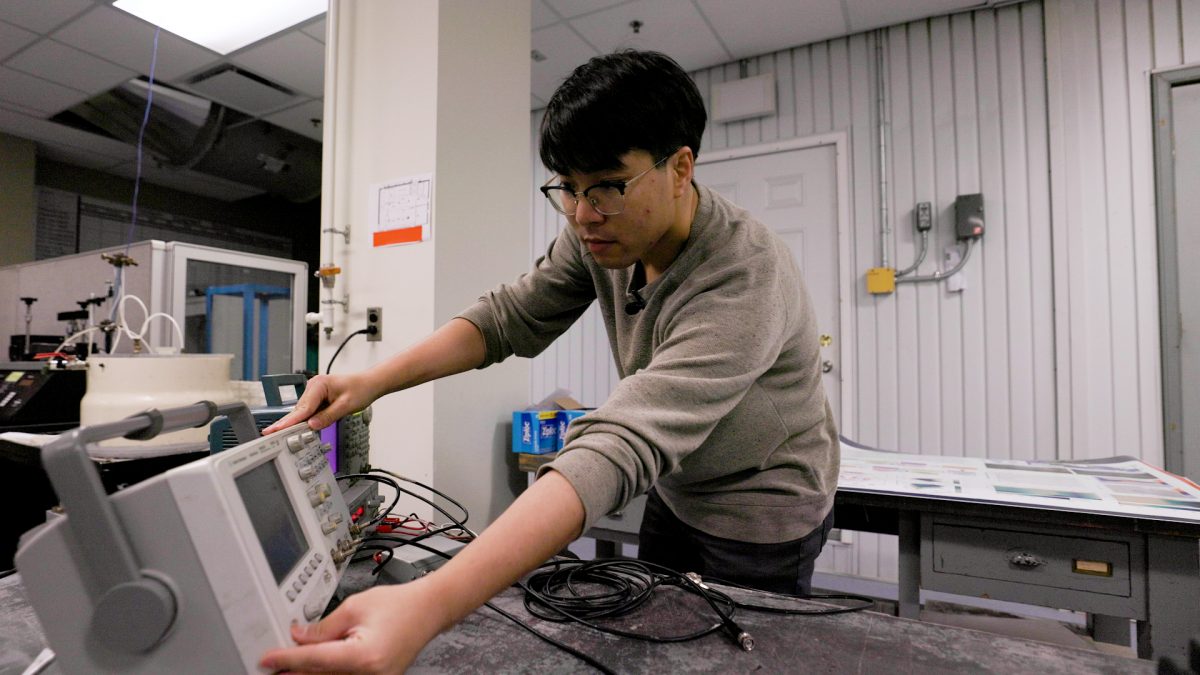
Hongwei Liu [MSc/18, PhD/21]
Monitoring the melting of permafrost
One of the biggest problems facing railroad engineers in northern Manitoba is unstable rail lines. The tracks sit on roadbeds that can shift, or in worst-case scenarios, get washed away by flooding. That’s because the rail line to Churchill, for example, is built on permafrost that is theoretically frozen year-round.
And that’s a serious problem because every year, permafrost isn’t quite as permanent as it used to be, thanks to climate change.
“The adverse effects of climate warming on the built environment in (sub)arctic regions are unprecedented and accelerating,” says Hongwei Liu, whose doctoral thesis in the Price Faculty of Engineering looked at ways to evaluate and test the permafrost in remote areas so as to better understand how to construct stable infrastructure.
He notes: “As global temperatures rise, the once always-frozen ground that covers a good chunk of the world is thawing. The thawing of permafrost will lead to significant settlement and as a result any infrastructure foundation will suffer a significant loss of strength. Design and construction of structures on permafrost foundation is challenging and requires information about its stiffness and ice content.”
Being able to get detailed measurements of permafrost properties will open up other possibilities as well, like creating early detection and warning systems that could monitor existing infrastructure and detect which ground layers could be vulnerable to permafrost carbon feedback and greenhouse gas emissions.
During the past several years, Liu has worked with Drs. Pooneh Maghoul, Ahmed Shalaby and others at UM to develop a device that uses ultrasonic waves that can be used in a lab or taken to a remote site to evaluate permafrost without disturbing the permafrost itself and possibly lead to structural problems.
When he started working on his project, Liu discovered that commercial software needed to apply the evaluation technique to permafrost didn’t exist, so he had to write it himself.
He says: “I was learning programming every day in preparation to write the software myself. It was quite challenging to learn several programming languages while working on my research and coursework at the same time. But we ended up publishing our own software package (GeoNDT) that supports the wave propagation analysis and dispersion analysis.”
And not incidentally, because he developed a new software package, Liu jointly filed three separate patents with his advisors.
Liu’s research found that the seismic response of frozen ground is very different from the response of unfrozen ground. Similar to ocean waves, the movement of the ground during a seismic event or earthquake causes otherwise solid rock to shake in an elliptical pattern. Permafrost responds differently to fast or slow Rayleigh waves and makes it possible to determine in-situ (non-destructive) permafrost properties during preliminary investigations.
His research on studying permafrost will continue, as Liu hopes to design a permafrost monitoring system that continuously keeps track of the state of permafrost using a fibre optic sensing system and Interferometric Synthetic Aperture Radar (InSAR).
Liu emphasizes his research was not conducted in isolation but in conjunction with a number of researchers and scientists beyond his laboratory.
He explains: “Attending conferences and learning things that seemed irrelevant to my research really helped me to solve some challenging problems that I had been struggling with. I had attended a conference and presented some preliminary results of my PhD research back in 2019 and was invited to the University of Waterloo to collaborate on research in January 2020.”
He continues: “I had opportunities to learn and use advanced experimental equipment in the field, and even though some of the work was not exactly what I was doing, problems solved in those studies still inspired me. A lesson learned was that sharing your research with others can really help you to make a breakthrough.”
University of Manitoba Distinguished Dissertation Awards are given to graduating doctoral students who have been nominated by their faculty/college/school for a dissertation that represents a ground-breaking piece of original work. Each year, one award is offered in each of the following categories: applied sciences, health sciences, humanities, natural sciences, and social sciences. Awardees receive a $3,000 prize.






